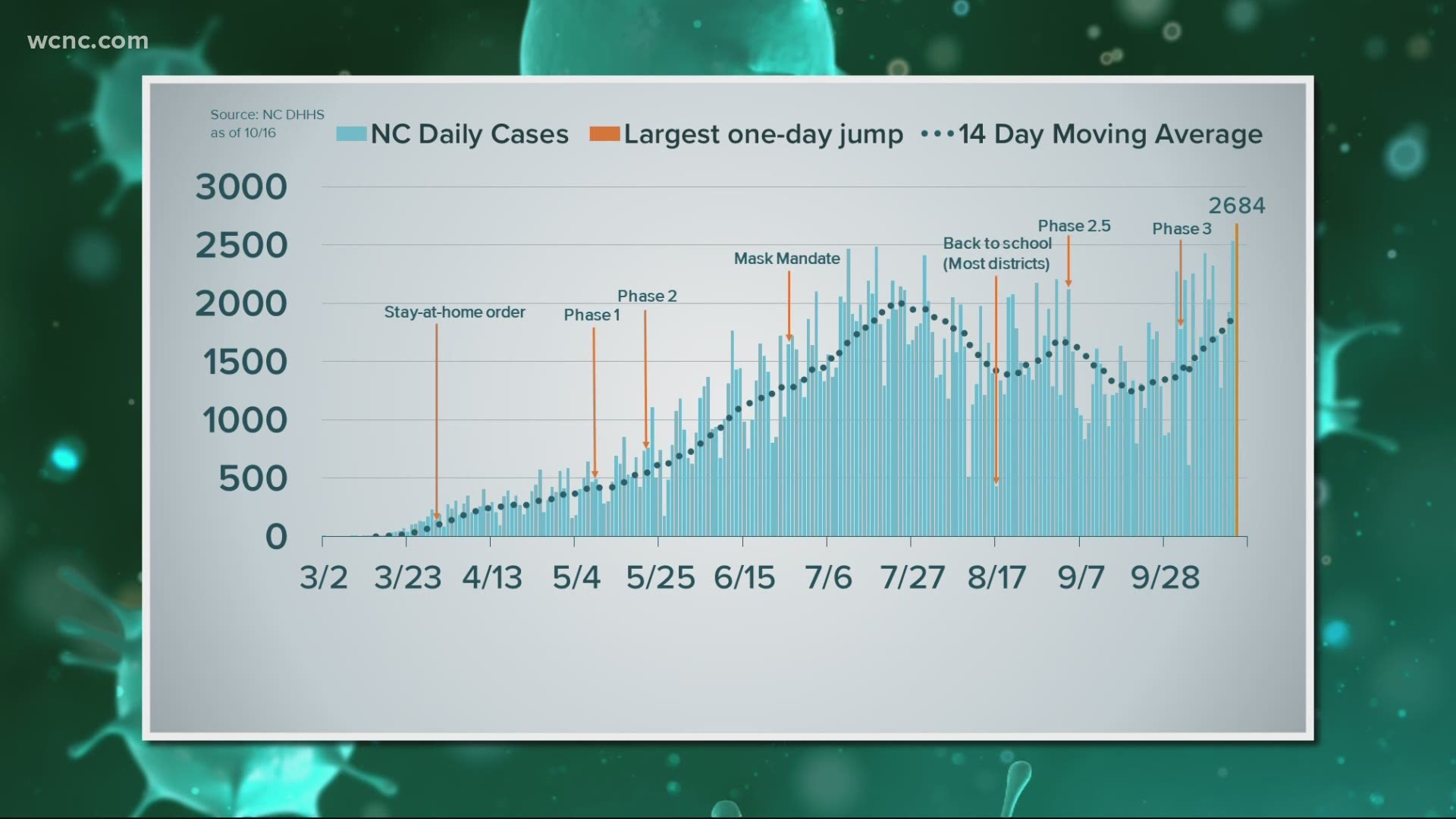CHARLOTTE, N.C. — The North Carolina Department of Health and Human Services is once again reporting the state’s highest one-day increase of laboratory-confirmed COVID-19 cases to date with 2,684 new cases reported.
The department is also reporting the second-highest number of hospitalizations in the past 30 days, with 1,148 reported.
NCDHHS is encouraging people to download and use SlowCOVIDNC, the official exposure notification app for North Carolina. SlowCOVIDNC alerts users when they may have been exposed to someone who has tested positive. The app relies on users to anonymously submit their positive result to notify others. The more people who download and use SlowCOVIDNC, the more we can slow the spread.
The department has issued guidance for fall-related events to help organizers and consumers minimize the risk for COVID-19 transmission. Even in small groups of close friends or extended family, it is critical that all North Carolinians wear a face-covering whenever they are in close contact with anyone outside their immediate household.
Gov. Cooper said during his Thursday news conference that complacency will cost lives and hurt our economy.
"It’s up to every one of us to continue wearing masks, social distancing and using good judgment," Cooper said.
The uptick in cases comes following an executive order to push the state into Phase 3 of reopening on October 2. The order allowed bars, gyms and other large venues to reopen at limited capacity. Governor Cooper issued the Phase 3 order to expire on October 23.
Next week, the governor will announce what happens after October 23.
The governor said the three week time period would allow for quick adjustments to the restrictions as the state moved into cooler weather, flu season, and also awaited possible impacts on the numbers from prior reopening stages.
Like dozens of states, North Carolina is experiencing a resurgence of viral spread, which health officials link to cooler weather, more gatherings, and greater lapses in COVID-safe protocol as people deal with pandemic fatigue.

